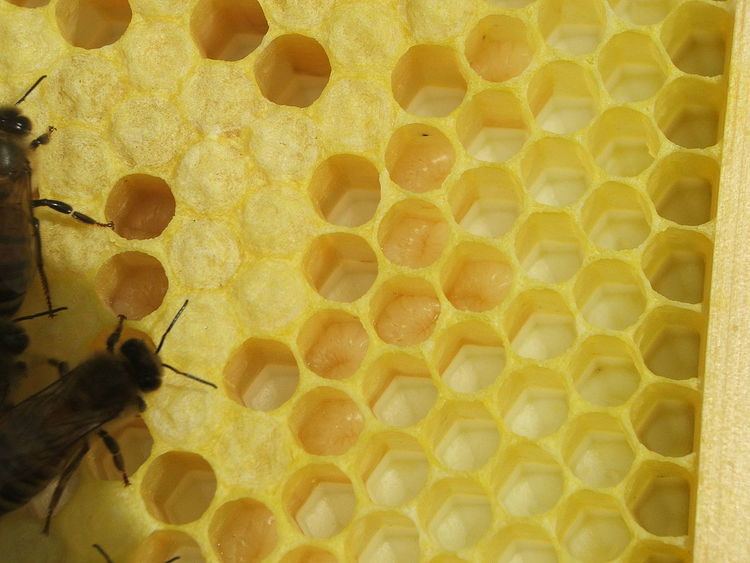 | ||
The brood comb is the beeswax structure of cells where the queen bee lays eggs. It is the part of the beehive where a new brood is raised by the colony. During the summer a good queen may lay 1500-2000 eggs per day, which results in 1500-2000 bees hatching after the three-week development period.
Contents
The brood comb is usually found in the lower part of the beehive, while the honey comb may surround the brood area and is found exclusively in the honey supers. When a queen does not have enough brood comb to lay eggs, usually due to congestion from pollen or honey, the bee colony may be more prone to swarm.
Size
The hexagonal cells for the brood comb vary in diameter. The size ranges between less than 4.6 millimetres (0.18 in) to greater than 6 millimetres (0.24 in). Drone bees require the largest cell size. There is some evidence that suggests that a smaller cell enables faster development time from egg to a fully developed, adult bee
Appearance
A frame of brood comb has two sides which appear the same until one looks at the base of the empty cells. The base is a hexagon and if you hold it up to the light there is a Y on one side of the frame and an upside down Y on the other side.
Freshly created beeswax comb may appear white at first. After the first generation of bees hatch from the brood comb it becomes yellow and darker in color (Comb that is exclusively used for honey comb appears lighter). Brood comb that is used for subsequent generations of bee brood becomes darker and darker until it almost appears black. The pupal lining sticks to the hexagonal walls of the cell and is not removed. The change in broodcomb color is due to the pupal lining that remains inside the cell and also small soil and pollen particles that are tracked in by the bees over time. The general recommendation for beekeepers is to remove and replace broodcomb that is older than four years.
Queen cells
Queen bees are not raised in the hexagonal brood comb but require a special queen cell.
